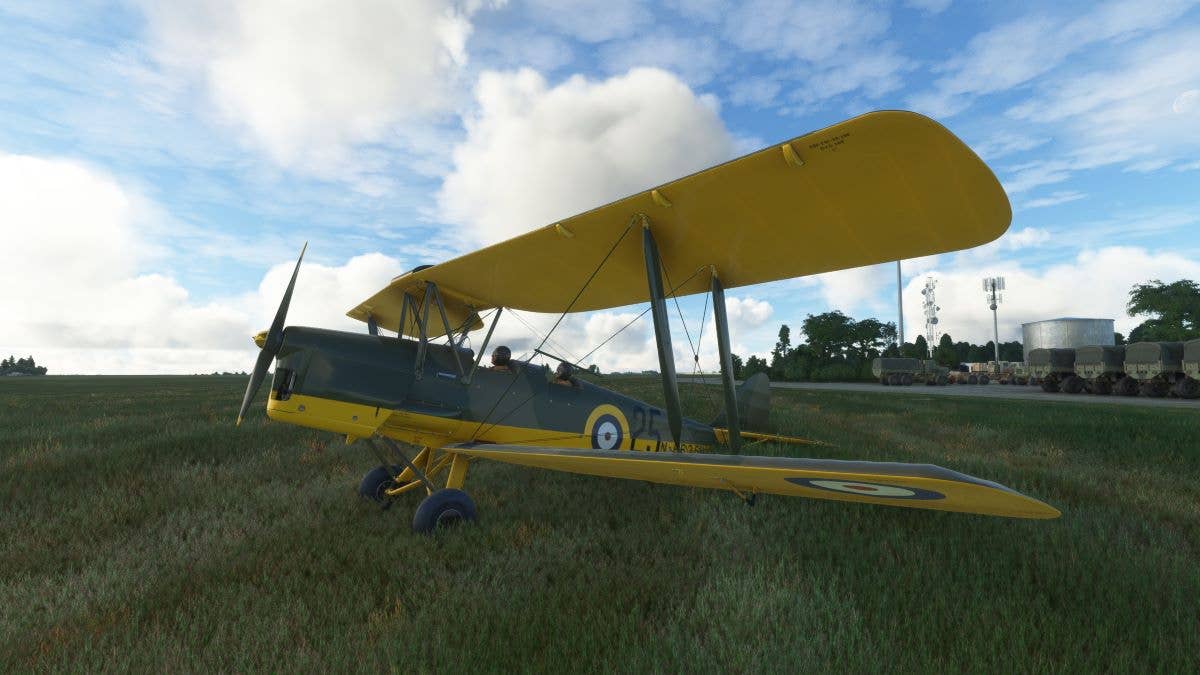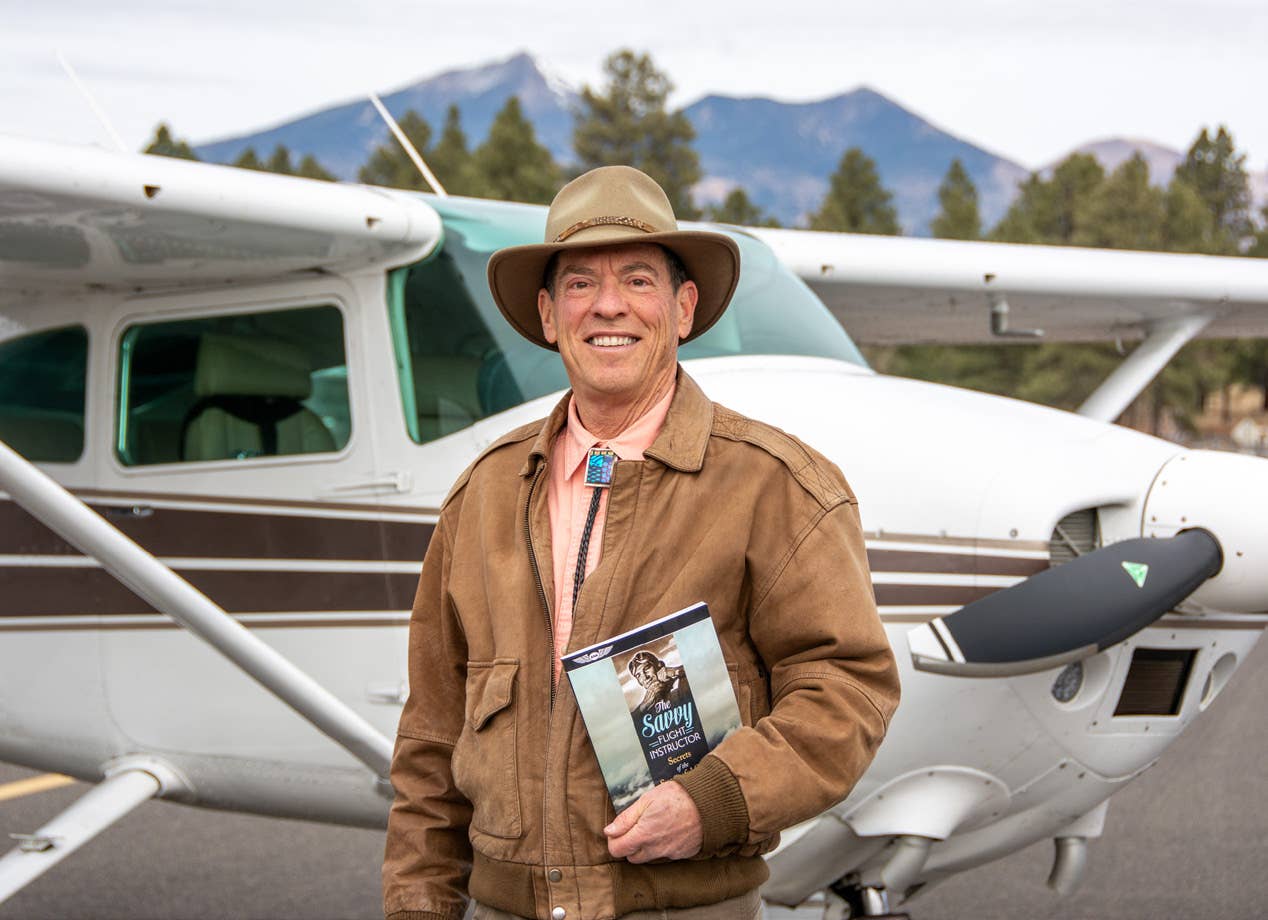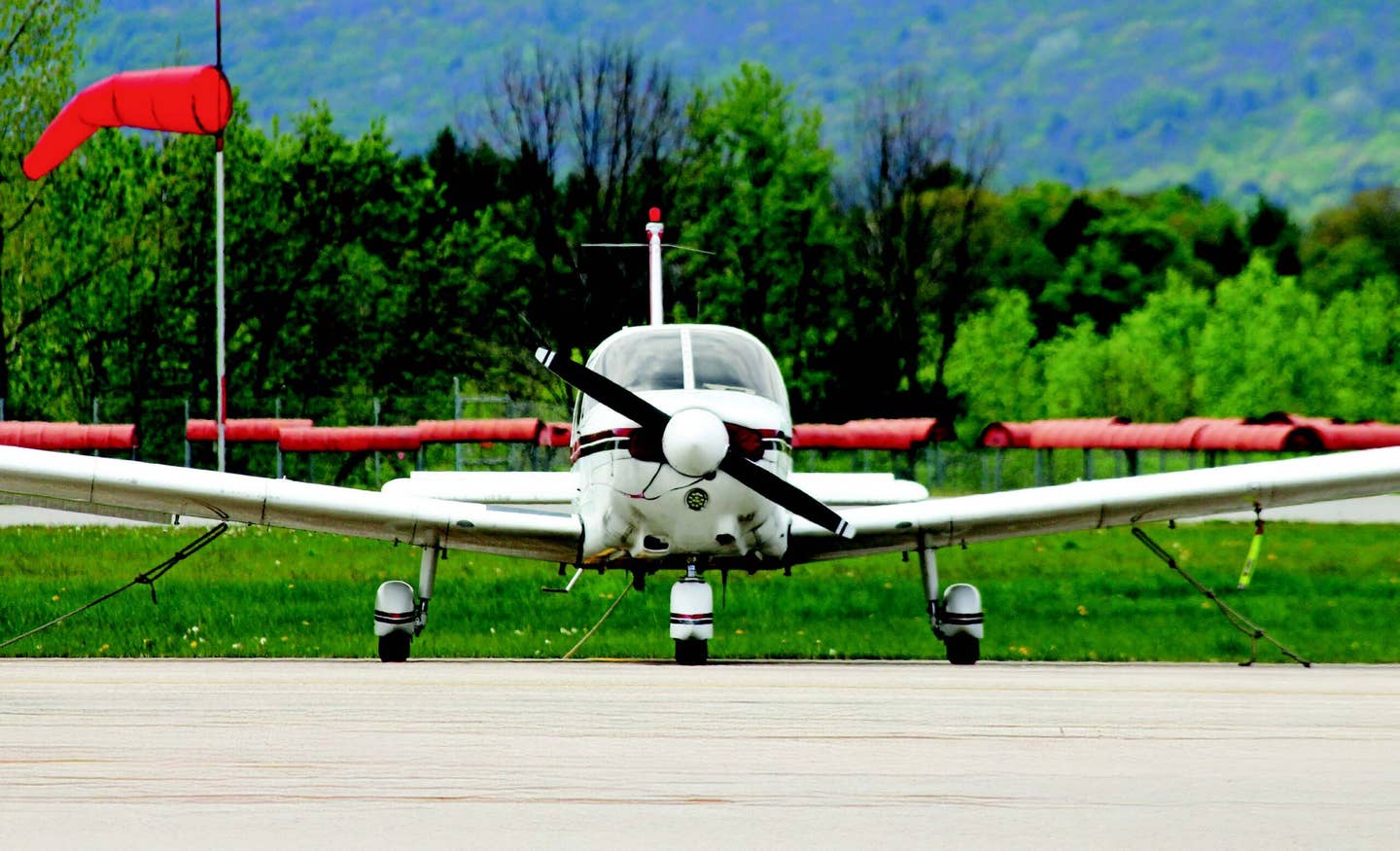Recreating the de Havilland Tiger Moth
Ride along on a Microsoft Flight Simulator journey through history in the first airplane that most British pilots in WWII learned to fly.

The de Havilland DH.82 Tiger Moth, recreated in ‘Microsoft Flight Simulator 2020.’ [Courtesy: Patrick Chovanec]
Today in Microsoft Flight Simulator 2020, I’m flying the de Havilland DH.82 Tiger Moth, the airplane that trained thousands of pilots from across the British Empire to take to the air in World War II.
Born in 1882, Geoffrey de Havilland was the second son of a village pastor. At an early age, he displayed a mechanical interest and pursued a career as an automotive engineer, building cars and motorcycles. Frustrated at work, in 1909 he received a gift of 1,000 pounds from his grandfather to build his first airplane, just a few years after the Wright brothers had made their first flight.
By World War I, de Havilland was working for Airco, where he designed a number of early warplanes, which enjoyed varying success, and flew as his own test pilot. In 1920, with the support of his former boss, de Havilland set up his own independent company and embarked on a series of aircraft named after moths, inspired by his love of lepidopterology, or the study of butterflies and moths.
In 1932, he introduced the DH.82 Tiger Moth, a variant of earlier aircraft designed specifically as a military trainer for the Royal Air Force (RAF), as well as other air forces. Like many aircraft at the time, the Tiger Moth’s fuselage is constructed of fabric-covered steel tubing, while its wings are made of fabric-covered wooden frames. I’ve seen a single person lift a Tiger Moth by the tail to take it out of its hangar. The Tiger Moth was powered by a de Havilland Gypsy air-cooled, 4-cylinder in-line engine which produced 120-130 hp, depending on the version.
Like most trainers, the Tiger Moth had two seats, each with its own set of controls, with the student in front and the instructor or solo pilot in back. One of the major changes introduced to the Tiger Moth, at RAF insistence, was folding door panels that made it easier to enter and exit both cockpits. The feature was absolutely essential when a student or instructor needed to quickly bail out wearing heavy parachutes.
The silver knobs on the left control throttle, fuel mixture, and aileron trim. The knob on the right enables “auto slots," slats on the wings that automatically deploy like flaps to provide additional lift at low speeds and high angles of attack. Notice that there is no artificial horizon. However, there is a turn indicator (in the center) as well as a red column that indicates the aircraft’s pitch. It is currently showing nose-up because the plane is resting on its tailwheel.
The compass, situated just in front of the stick, is a bit tricky. You can either keep it pointed toward north and look to where the line is pointing, or you can rotate the compass ring to show the current heading at the top and follow that by keeping it centered.
In addition to the cockpit gauge, there’s also a mechanical airspeed indicator on the left wing. Red shows typical stall speed range (below 45 mph).
I’m at England’s Upavon Airfield, a few miles north of Stonehenge, which was home to the RAF’s Central Flying School, founded in 1912, and where the first Tiger Moths were delivered. It is now a small army base (hence the vehicles) and is also used as a glider field. With no electrical starter, the Tiger Moth is hand-propped to get it started. The turning of the propeller, by hand, engages the magnetos that send charges to the spark plugs, starting the engine.
This particular Tiger Moth, N-6635, is based on the one on display at the Imperial War Museum at RAF Duxford, near Cambridge. It’s actually a composite that was put together with parts from different Tiger Moths.
The engine is modeled realistically. If you overstress it on full throttle for more than a few minutes, it will overheat and conk out. If you let it idle for too long, the spark plugs will foul up. With a small engine like this, the left-turning tendencies are not pronounced. However, the trickiest part of takeoff for most tailwheel airplanes is still when the tail comes up. The descent of the rotating propeller causes a gyroscopic precession to the left.
The Tiger Moth gained immediate popularity as the RAF’s primary trainer—the first airplane a would-be pilot learned to fly after ground school before moving on to more advanced fighters or bombers. It gained a reputation for being “easy to fly, but difficult to master.” In normal flight, it was forgiving of mistakes. On the other hand, the Tiger Moth required great precision from a pilot to learn aerobatic combat maneuvers, without going into a spin. However, it recovers easily from spins, which meant it highlighted a student’s shortcomings without (usually) putting them at fatal risk. Though I did notice that when flying upside down (or going through a roll), the engine sputters, probably because gravity messes with the fuel flow.
During the 1930s, between world wars, students selected by the RAF took about nine to 12 months to earn their pilot wings, building up about 150 hours of flight time, about 55 with an instructor and the rest solo. Their instruction included night, formation, and instrument flying, along with gunnery and aerobatics (for combat).
The Tiger Moth was sold to 25 air forces from different countries and proved popular to private buyers as well. It was a big commercial success for the company. A total of 1,424 Tiger Moths were produced prior to the outbreak of WWII, most of which were manufactured at the de Havilland factory in Hatfield, north of London.
Slowing down while descending to land can be difficult. I found I usually needed to cut the power to idle and glide in. Power-off landings were a very typical method in that era. It’s nearly impossible to see forward in the Tiger Moth, especially when landing. It’s best to lean your head out the side, while keeping one eye on controlling the airspeed at around 60 mph (about 15-20 mph above stalling).
There are also no wheel brakes. So once you do land, you just have to let friction slow you down. It’s easier in a grassy field like this.
The success of the Tiger Moth led to Geoffrey de Havilland being awarded the Commander of the Order of the British Empire (CBE) in 1934. But its story was only just beginning.
Welcome to Goderich Airport (CYGD) in Ontario, Canada, about 2.5 hours north of Detroit on the eastern shore of Lake Huron. In 1928, de Havilland set up a subsidiary in Canada to produce Tiger Moths to train Canadian airmen. This Tiger Moth, #8922 (registration C-GCWT), is based on a real plane that belongs to the Canadian Warplane Heritage Museum in Mount Hope, Ontario, and is in airworthy condition.
With the outbreak of WWII in 1939, the British government realized that Britain itself was an unsuitable location for training large numbers of new pilots. Not only is the weather often poor, the airspace over Britain was quickly becoming a battleground between the beleaguered RAF and the German Luftwaffe—the last place you’d want a student pilot to learn how to fly.
Canada, in contrast, offered vast areas far from enemy activity, where pilot training could be conducted. To take advantage of this, the British Commonwealth Air Training Plan (BCATP) was created to instruct thousands of airmen from Britain and across the Empire in safer locations like Canada, Australia, New Zealand, Bermuda, and South Africa. The yellow “training” livery was typical of the BCATP, though the real-life airplane was also equipped with a plexiglass-enclosed cockpit to permit winter training.
Many of the small airports dotted across Canada from east to west—as well as some large ones—got their start as part of BCATP, commonly referred to as “the Plan." I selected Goderich to fly from because after it was built in Canada in 1942, this plane, #8922, was used to train pilots here at the No. 12 Elementary Flying Training School (EFTS), as part of the BCATP. The same airplane later went to No. 4 EFTS at Windsor Mills, Quebec, an airfield that no longer exists.
Eventually, there were 36 elementary flight schools across Canada, in addition to dozens more devoted to training bombardiers, navigators, and gunners. At least 131,533 Allied pilots and aircrew were trained in Canada under BCATP—the largest of any country participating in the Plan—of which 72,835 were Canadian. The program cost Canada $1.6 billion but employed 104,000 Canadians in air bases across the land. De Havilland produced 1,548 Tiger Moths in Canada, by war’s end, to help stock these flight schools with aircraft.
While training pilots in Canada was safer than in Britain, lives were still lost. From 1942 to 1944, a total of 831 fatal accidents took place, an average of five per week.
BCATP training was by no means limited to Canada. I’m here at Parafield Airport in Adelaide, Australia, which was home to that country’s No. 1 Elementary Flight Training School and received its first Tiger Moths in April 1940. This particular Tiger Moth, A17-58, was built by de Havilland in Australia in 1940 and apparently still continues to fly. Australia eventually had 12 elementary flight schools (plus a host of other schools) as part of BCATP, which was known there as the Empire Air Training Scheme (EATS).
Prior to BCATP, the Royal Australian Air Force (RAAF) only trained about 50 pilots per year. By 1945, more than 37,500 Australian aircrew had been trained in Australia, though many then went to Canada to complete their more advanced training before going into combat. Most Australians in the RAAF went on to fight in the Pacific Theater, though some joined the RAF to fight over Europe. De Havilland built a total of 1,070 Tiger Moths in Australia and even exported a few batches to the U.S. Army Air Forces and the Royal Indian Air Force.
The BCATP was one of the largest aviation training programs in history, providing about half of the airmen who flew for Britain and its dependencies in WWII. The ability to train in safety, away from the combat zone, gave Allied pilots a crucial advantage over the Germans, who typically went into combat with roughly half the training hours of their counterparts. The program was so important that President Franklin D. Roosevelt, who called the U.S. “the arsenal of democracy," dubbed Canada “the aerodrome of democracy” as a result of its contribution to training Allied airmen—many of them in the Tiger Moth.
Tiger Moths were not only used to train pilots during WWII. Some were deployed for coastal patrols. I’m here at Farnborough, Britain’s former center for experimental aircraft development (southwest of London), to investigate another interesting purpose they served.
No, it’s not a mistake—there’s a reason why there are no pilots visible in either cockpit. This aircraft, LF858, was what was known as a “Queen Bee.” British anti-aircraft gun crews needed practice firing at real targets. But flying an airplane with people shooting at you is, well, rather dangerous. So de Havilland figured out a way to put radio equipment in the rear cockpit that could receive messages for an operator on the ground and work the aircraft’s controls accordingly. In other words, it was the world’s first “drone” aircraft.
Besides being able to fly by remote control, the main difference between a regular Tiger Moth and a Queen Bee is that instead of metal tubing for the fuselage frame, the latter used wood (like for its wings) to save money. The objective wasn’t to shoot down the Tiger Moth—that would be wasteful. Gunners used an offset to hopefully miss, so the airplane could land and be used again. But if they did hit, no pilots were at risk.
About 470 Tiger Moth “Queen Bees” were built during WWII. The term “drone” for a pilotless airplane derives directly from the Queen Bee program and refers to a male bee who flies just once to mate with a queen then dies.
By the end of WWII, nearly 8,700 Tiger Moths had been built, 4,200 of them for the RAF alone. It continued to be used by the RAF for training until it was replaced by the de Havilland Chipmunk in the 1950s.
The fact that so many people across the British Empire had learned to fly in a Tiger Moth made them immensely popular after the war, among private pilots and enthusiasts. An estimated 250 Tiger Moths are still flying, including this one based out of the small airstrip near Ranfurly on the southern island of New Zealand.
A number of Tiger Moth clubs exist around the world. The late Christopher Reeve, of Superman fame, once joined one of these clubs and learned how to fly the Tiger Moth. Reeve even made a movie about it, which you can find on YouTube. He said it took some time getting used to how slow they approach and land.
Tiger Moths have appeared in several films, often disguised as other biplanes. For instance, the plane in Lawrence of Arabia (1962) was a Tiger Moth, decked out to look like a German Fokker. The silver biplane in The English Patient (1993) was a Tiger Moth (the other, yellow biplane in that movie was a Stearman). It’s worth mentioning that the biplane in Out of Africa (1985) was not a Tiger Moth, but the earlier and very similar Gypsy Moth, also built by de Havilland. Apparently there was even a movie in 1974 called The Sergeant and the Tiger Moth (1974) about a guy and his girlfriend who aren’t even pilots but build and fly one anyway. I have no idea if it’s any good, so please find and watch it for me.
If you’d like to see a version of this story with more historical photos and screenshots, you can check out my original post here. This story was told utilizing Ant’s Airplanes Tiger Moth add-on to Microsoft Flight Simulator 2020, along with liveries and scenery downloaded for free from the flightsim.to community.

Sign-up for newsletters & special offers!
Get the latest FLYING stories & special offers delivered directly to your inbox






